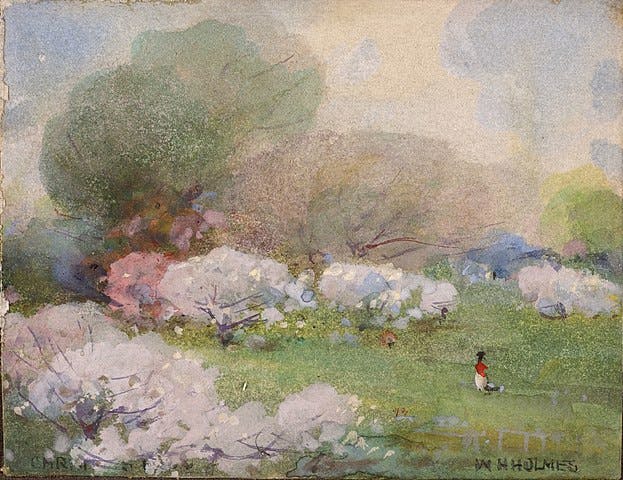Poem of the Day: ‘Loveliest of trees, the cherry now’
A.E. Housman had a talent — perhaps the greatest in the history of English poetry — for making difficult verse look simple.

A.E. Housman (1859–1936) had a talent — perhaps the greatest in the history of English poetry — for making difficult verse look simple, as the Sun pointed out when Housman’s “When I Was One-and-Twenty” was a Poem of the Day in March and “Epitaph on an Army of Mercenaries” in July. One of Housman’s best-known poems, “Loveliest of trees, the cherry now” is yet another example. It may start as a spring poem, the cherry trees in bloom, “Wearing white for Eastertide.” Yet a mention of time and aging in the second of the tetrameter quatrains turns the poem into winter verses. Because the narrator will live at best another fifty years, the cherry trees in spring are not enough — and so “About the woodlands I will go / To see the cherry hung with snow.” That’s a fairly complex thought, but Housman, as always, makes it seem easy.
Loveliest of trees, the cherry now
by A.E. Housman
Loveliest of trees, the cherry now
Is hung with bloom along the bough,
And stands about the woodland ride
Wearing white for Eastertide.
Now, of my threescore years and ten,
Twenty will not come again,
And take from seventy springs a score,
It only leaves me fifty more.
And since to look at things in bloom
Fifty springs are little room,
About the woodlands I will go
To see the cherry hung with snow.
___________________________________________
With “Poem of the Day,” The New York Sun offers a daily portion of verse selected by Joseph Bottum with the help of the North Carolina poet Sally Thomas, the Sun’s associate poetry editor. Tied to the day, or the season, or just individual taste, the poems will be typically drawn from the lesser-known portion of the history of English verse. In the coming months we will be reaching out to contemporary poets for examples of current, primarily formalist work, to show that poetry can still serve as a delight to the ear, an instruction to the mind, and a tonic for the soul.
